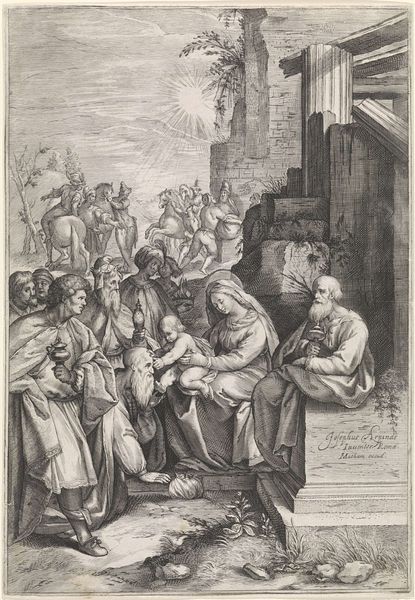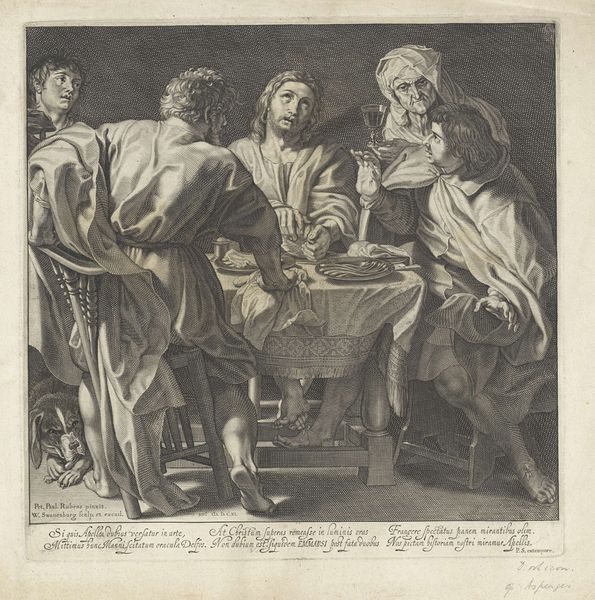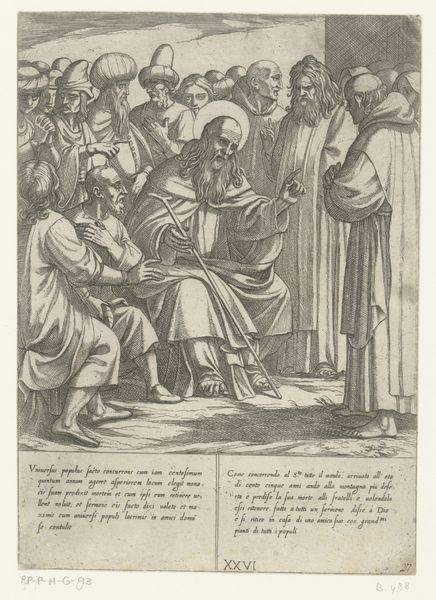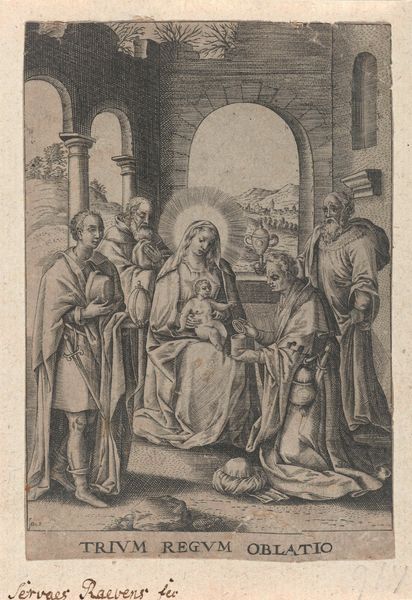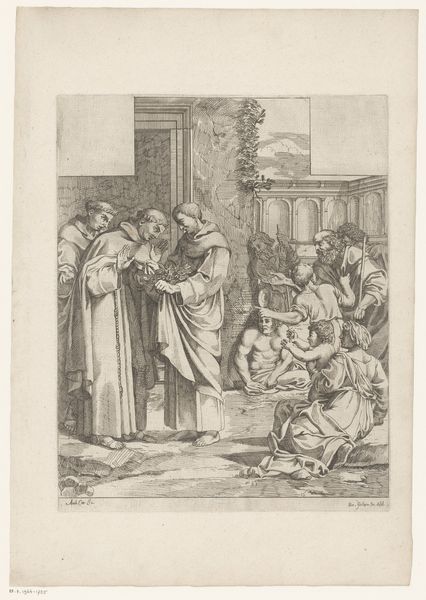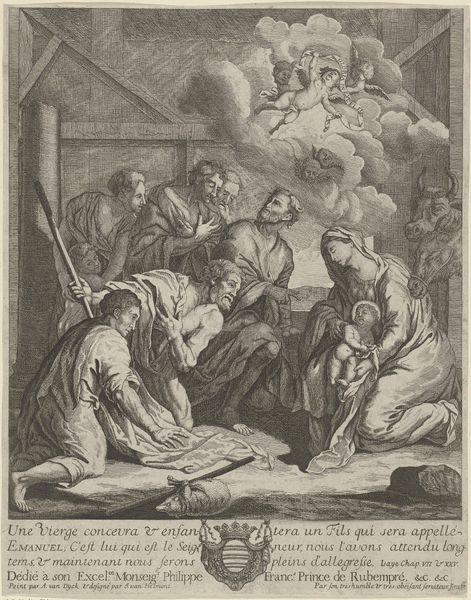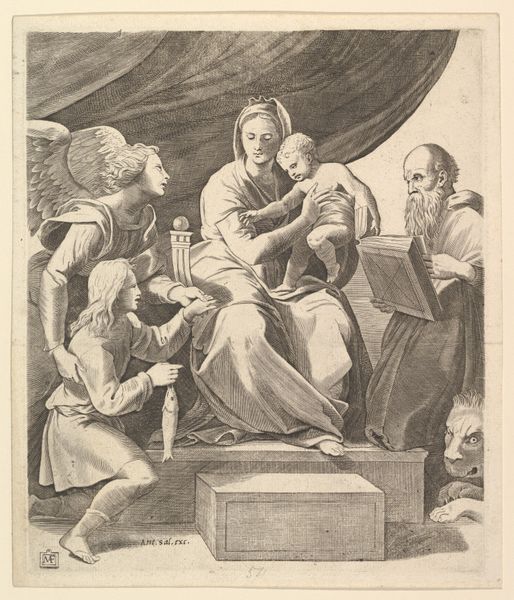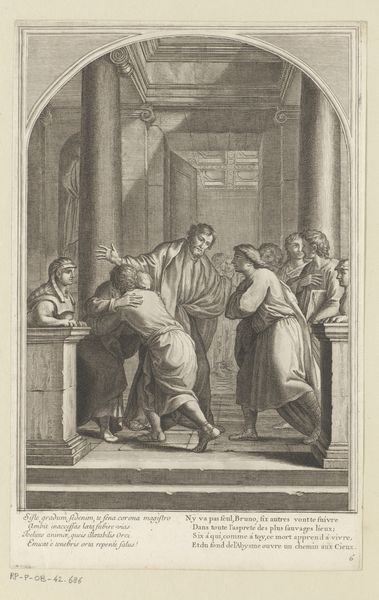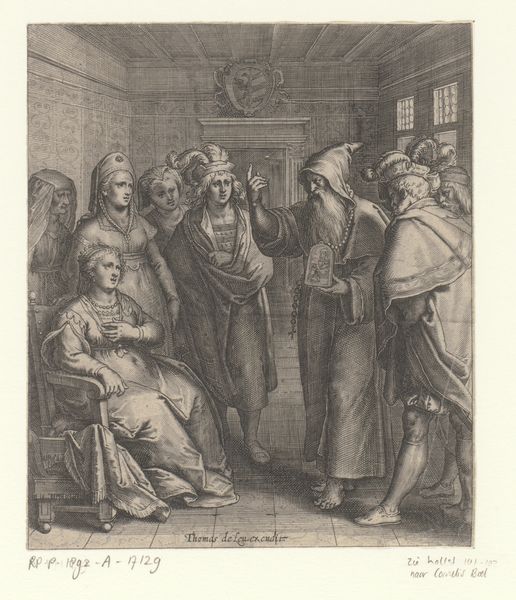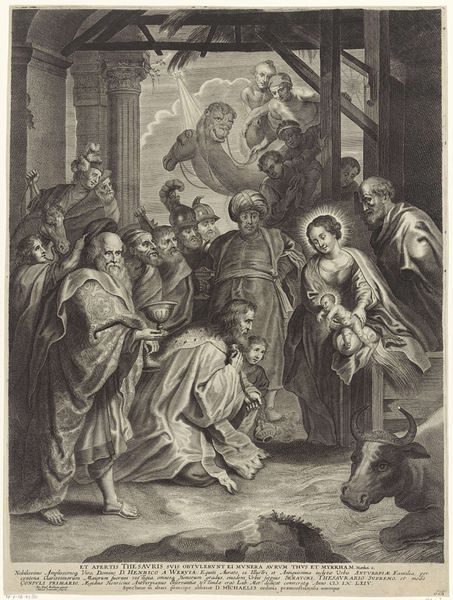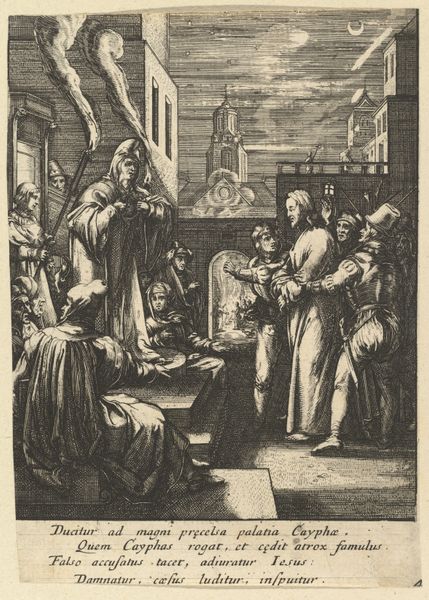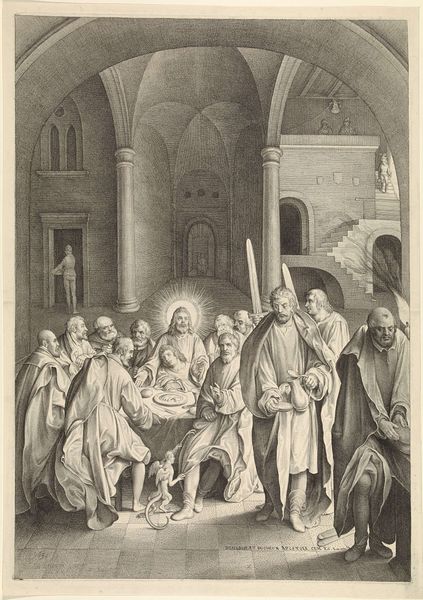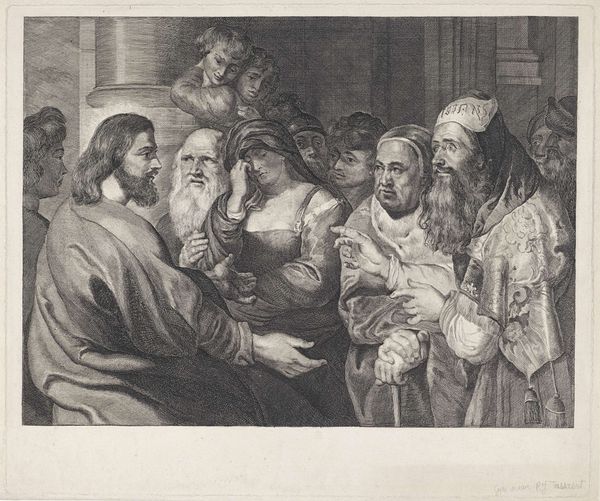
Dimensions: height 257 mm, width 188 mm
Copyright: Rijks Museum: Open Domain
Curator: There's a hushed quality to this image, isn’t there? Like the air itself is holding its breath. Editor: Indeed. What we are looking at is "The Twelve-Year-Old Christ in the Temple," an etching by John Greenwood, dating sometime between 1739 and 1792. Greenwood's artwork offers a captivating vision of the biblical scene. He actually based it "after a design of Rembrandt", as we can read in the bottom part. Curator: Ah, so it's Greenwood channeling Rembrandt! That explains the drama, the intense focus on faces illuminated against a darker ground. You get the sense of intellectual wrestling here. The boy Jesus is almost radiating light, and all these serious, bearded men seem completely absorbed in whatever he's saying. He's totally holding court! Editor: And note the strategic composition, where all figures are gathered under this shadowy arch, and around this opened book. It speaks to the social and cultural weight of religious knowledge and debate in the 18th century. Remember, these scenes weren't just illustrations, they were carefully crafted arguments about power, belief, and interpretation. Curator: Right. Power structures within religious institutions. Yet, I also wonder about Greenwood's personal motivations. The gesture of pointing coming from the little Christ it’s really powerful. What made him choose this specific scene? Was it the youthful spark challenging the established wisdom of elders? Or simply the narrative strength, with all those turbans, robes, the dramatic lighting? It just drips with potential for great visual storytelling. Editor: Good point. Consider the very act of etching, too. A print like this wasn't just for private contemplation; it was designed to be reproduced and distributed widely. Greenwood aimed to share not just Rembrandt's design, but a very specific message—a particular way of viewing this biblical encounter and its relevance to contemporary debates. Curator: It really puts the artwork in its context, the fact that this image was never designed to be looked at alone! Ultimately, this is Greenwood’s way of participating in a wider conversation. What strikes me now is this dialogue in the picture – between generations, intellects, beliefs. Editor: A truly fitting way to close. This print, far from being a static depiction of the past, still acts a prompt for dialogue across time and belief.
Comments
No comments
Be the first to comment and join the conversation on the ultimate creative platform.
